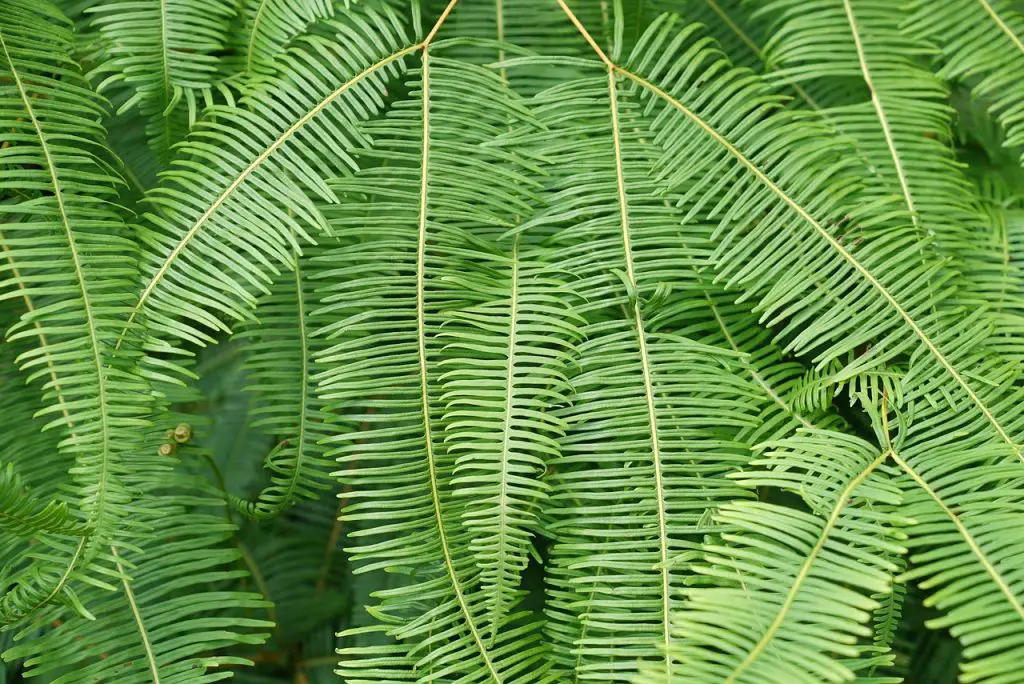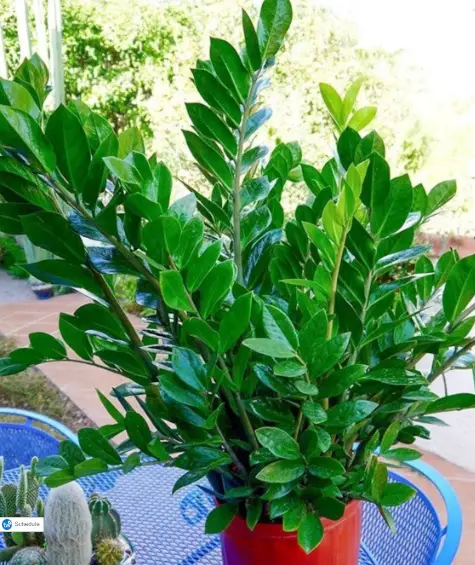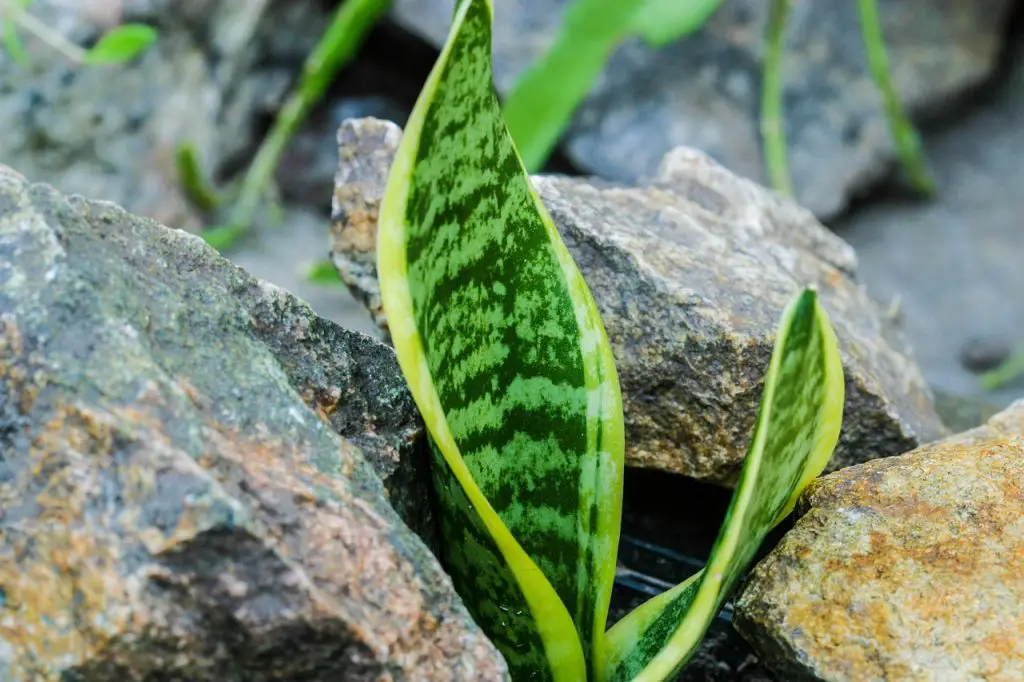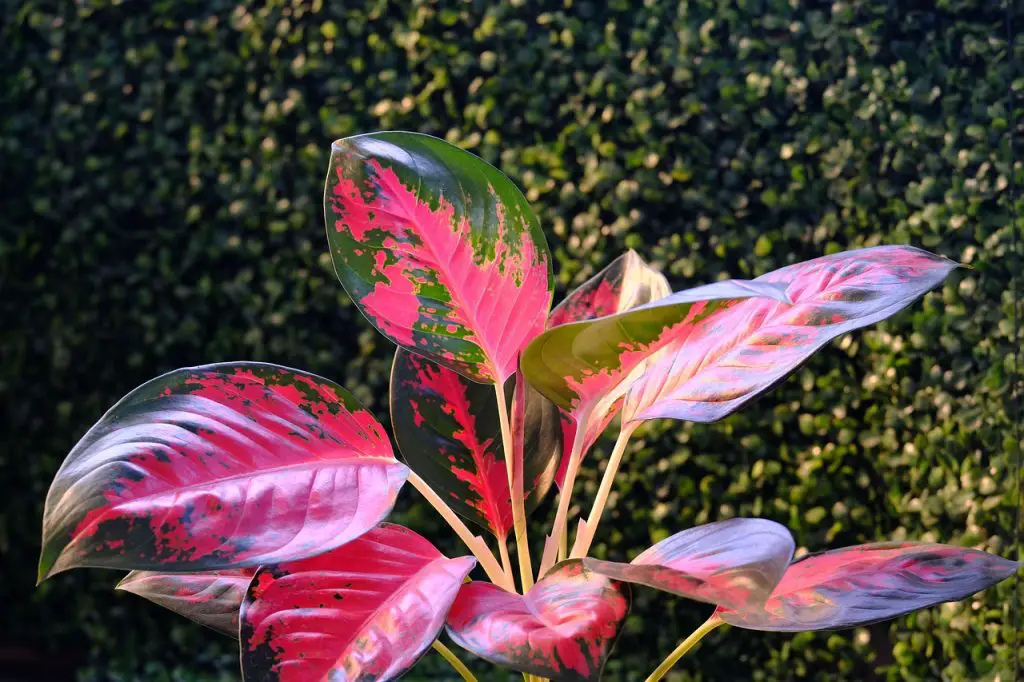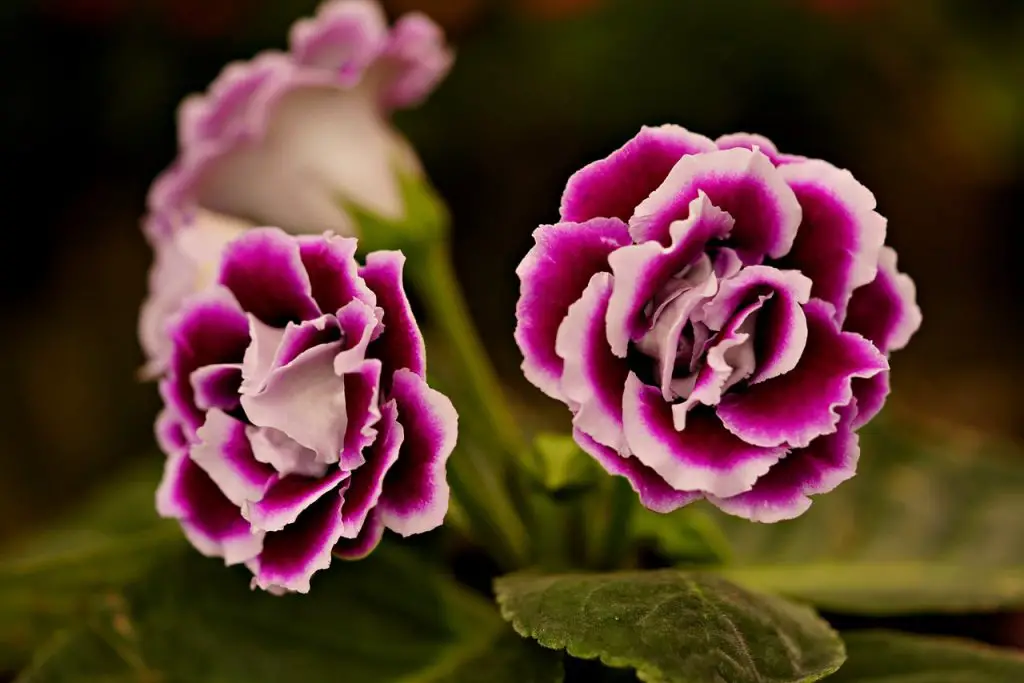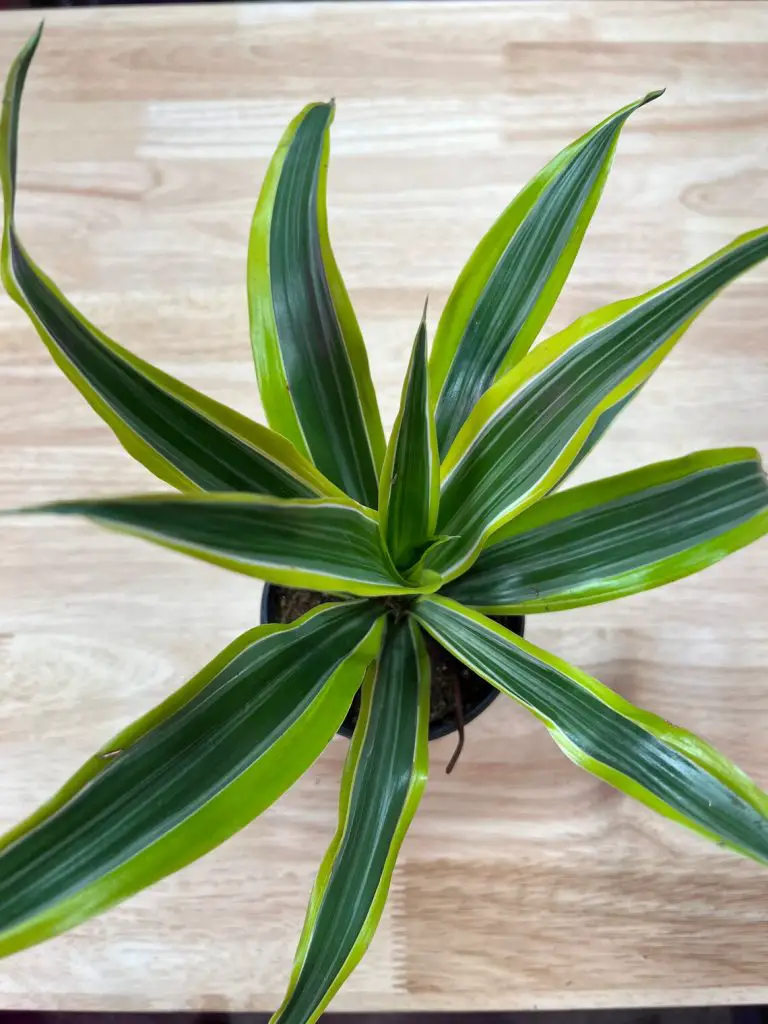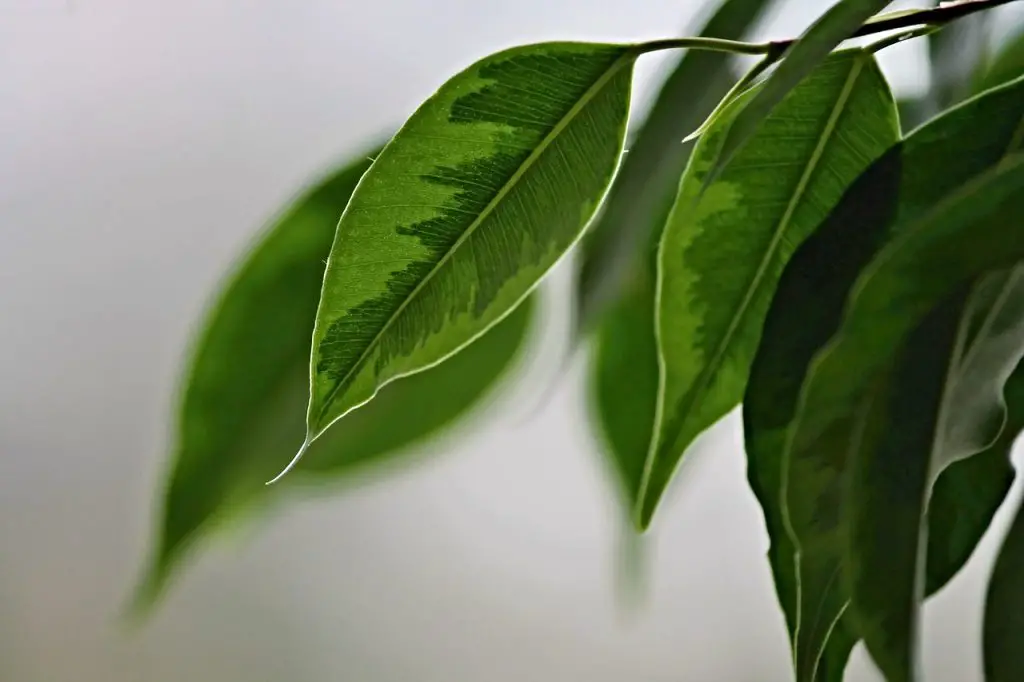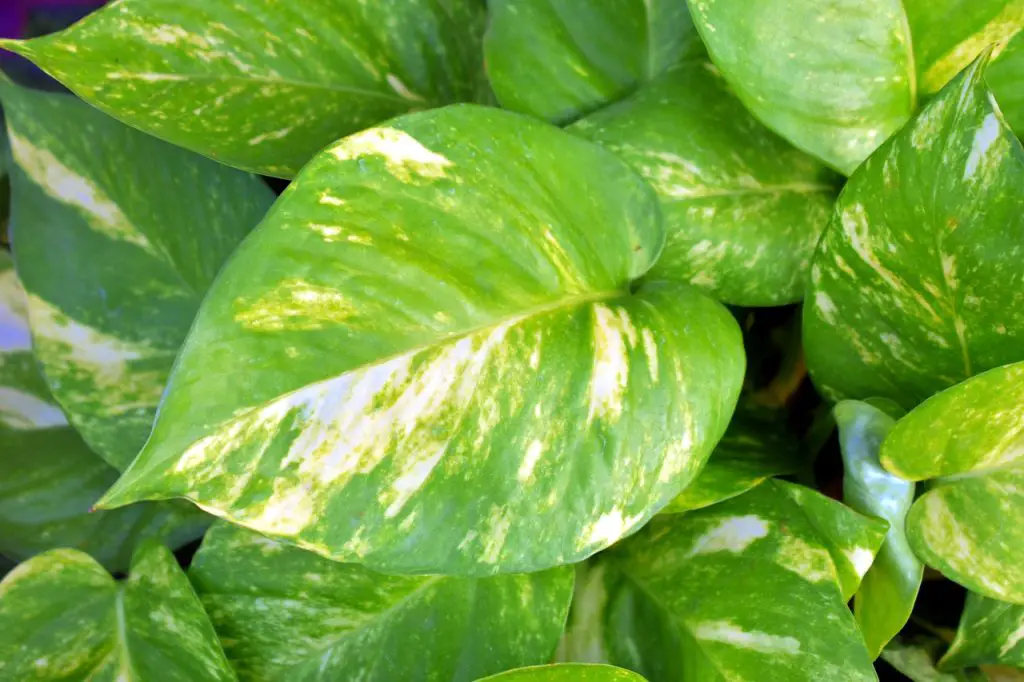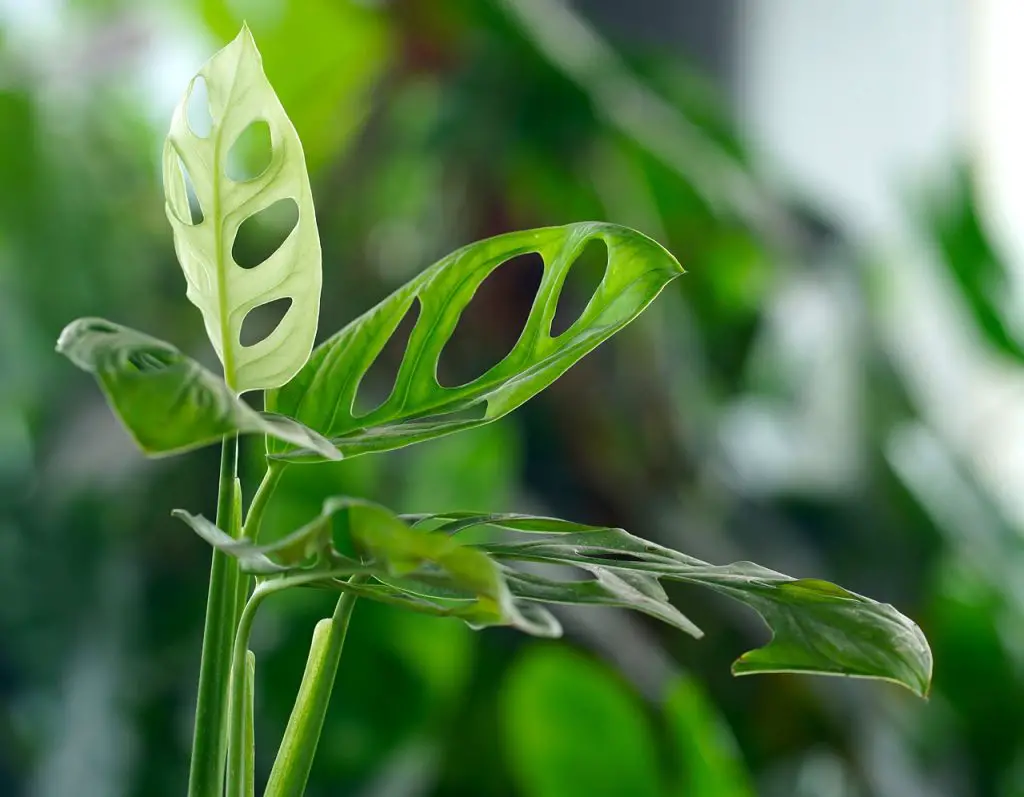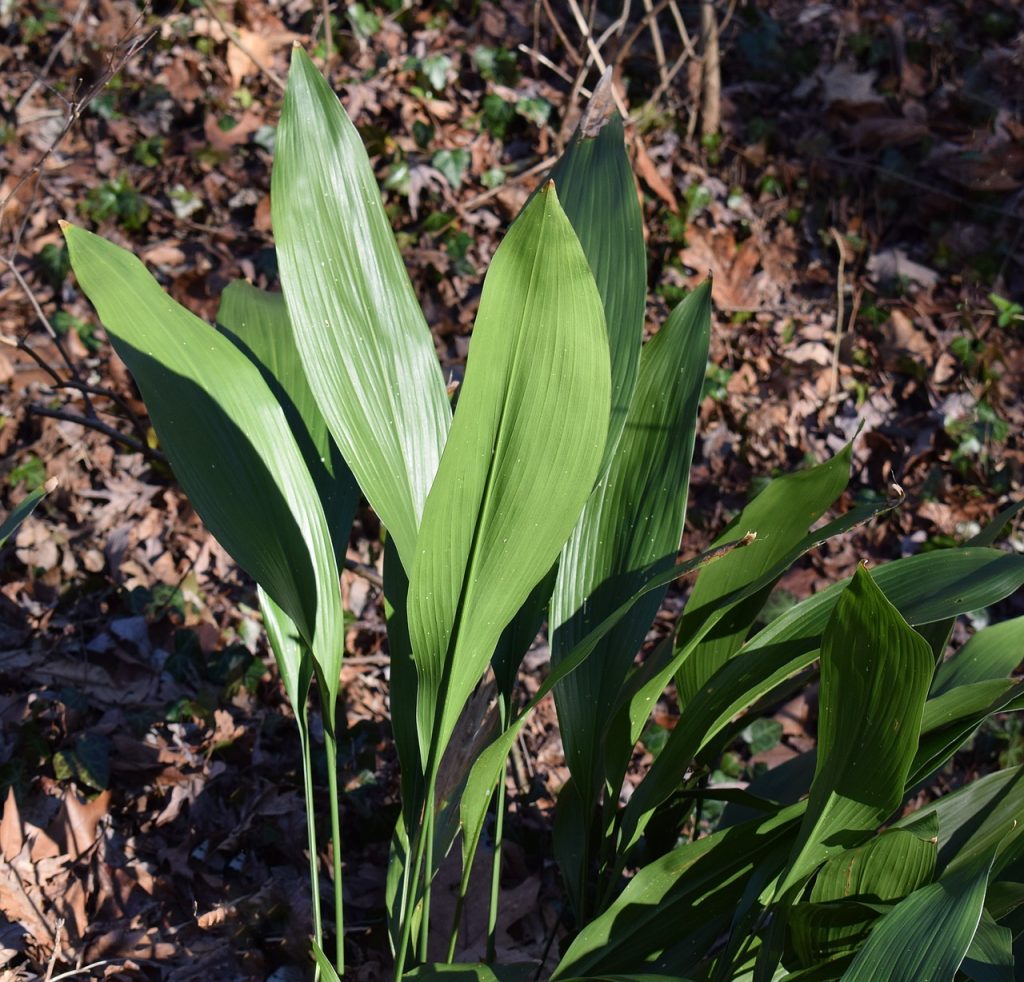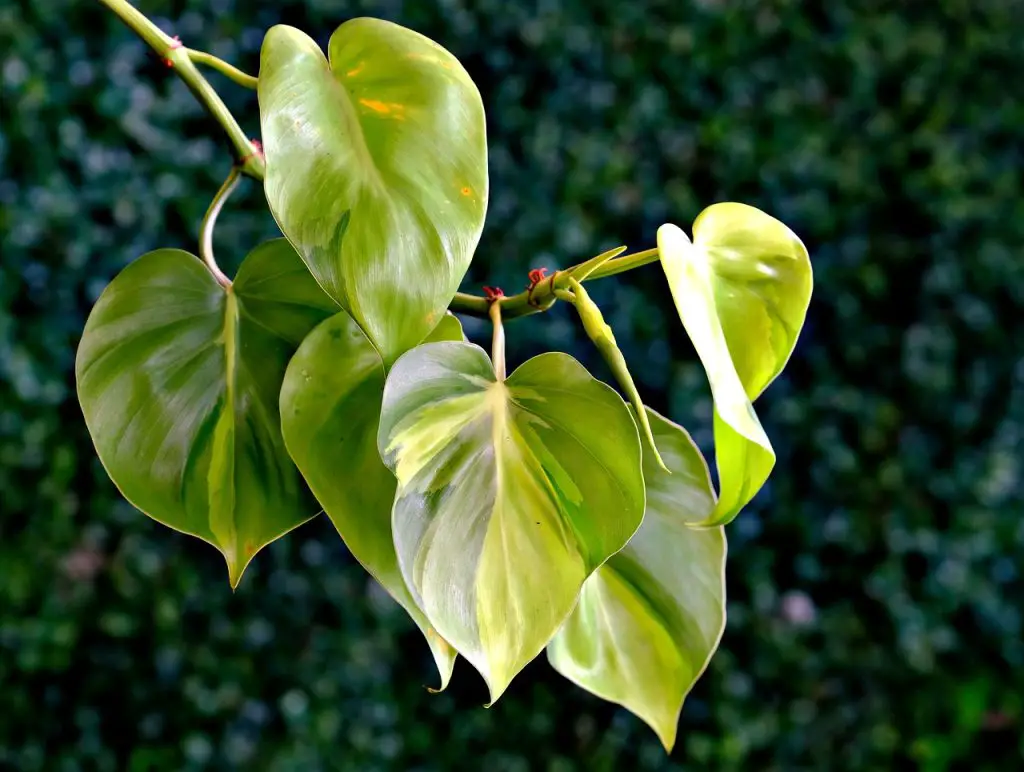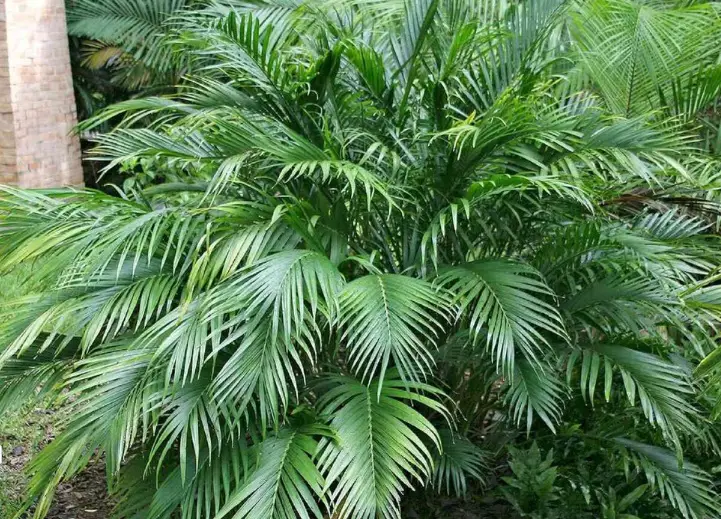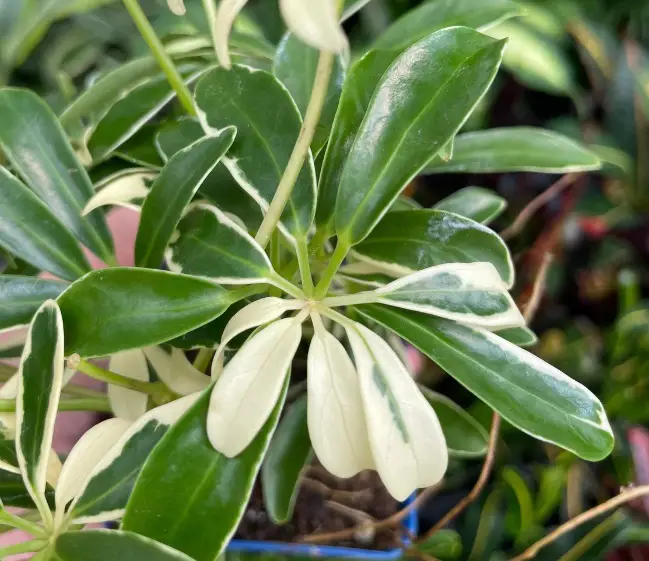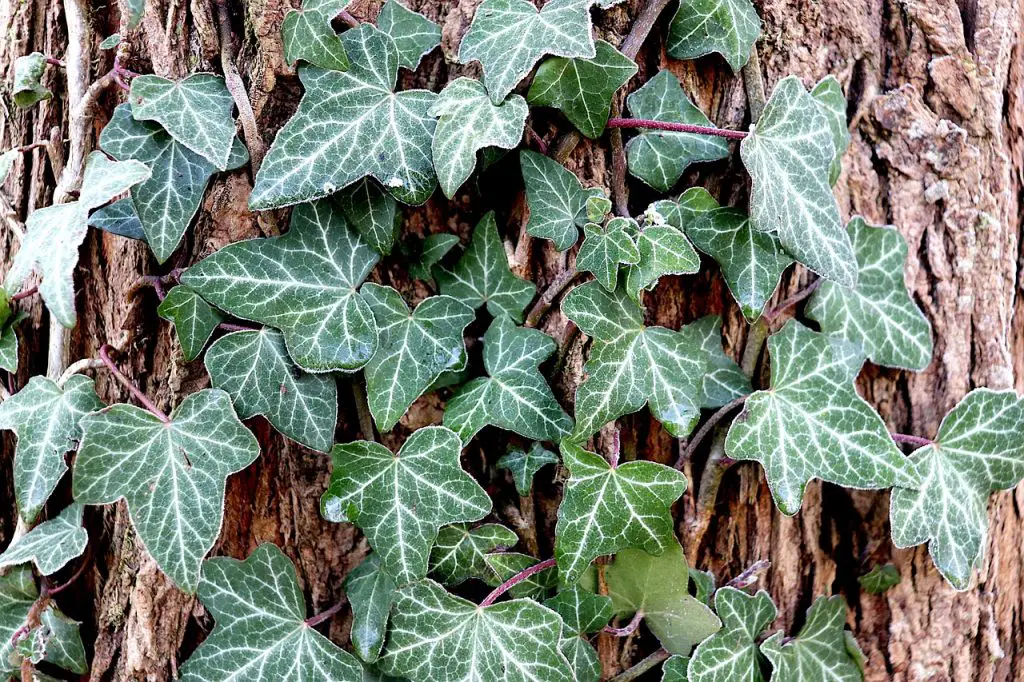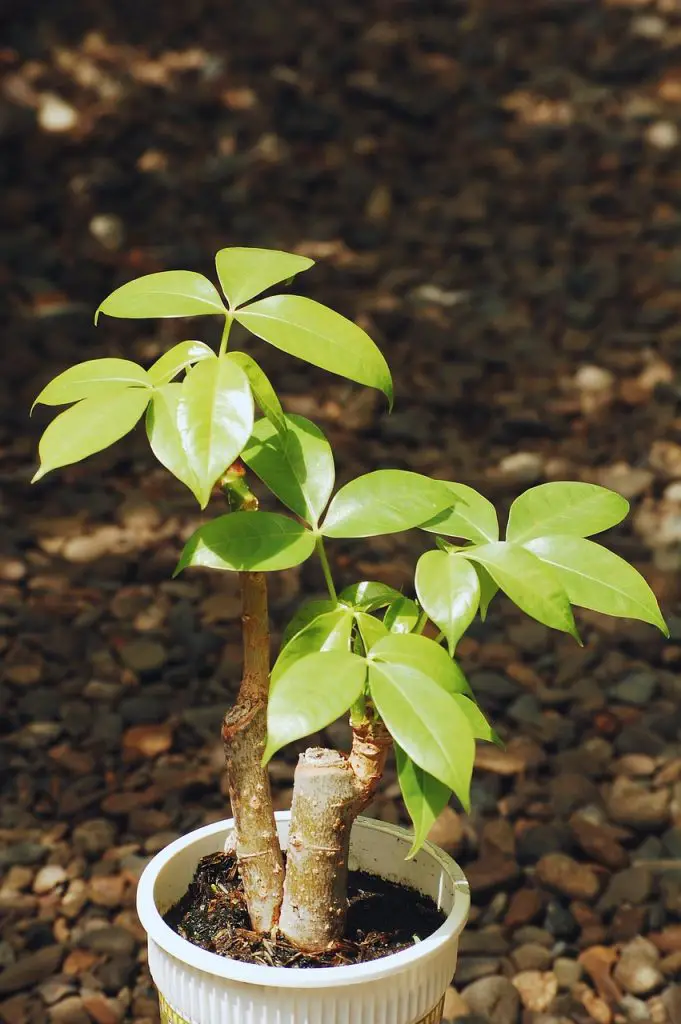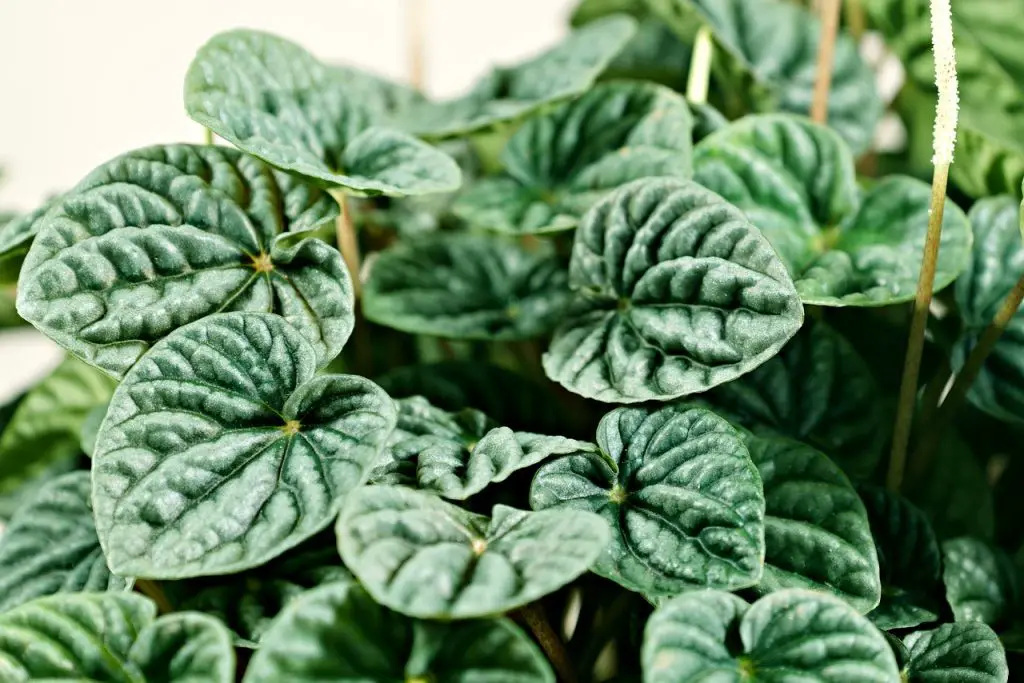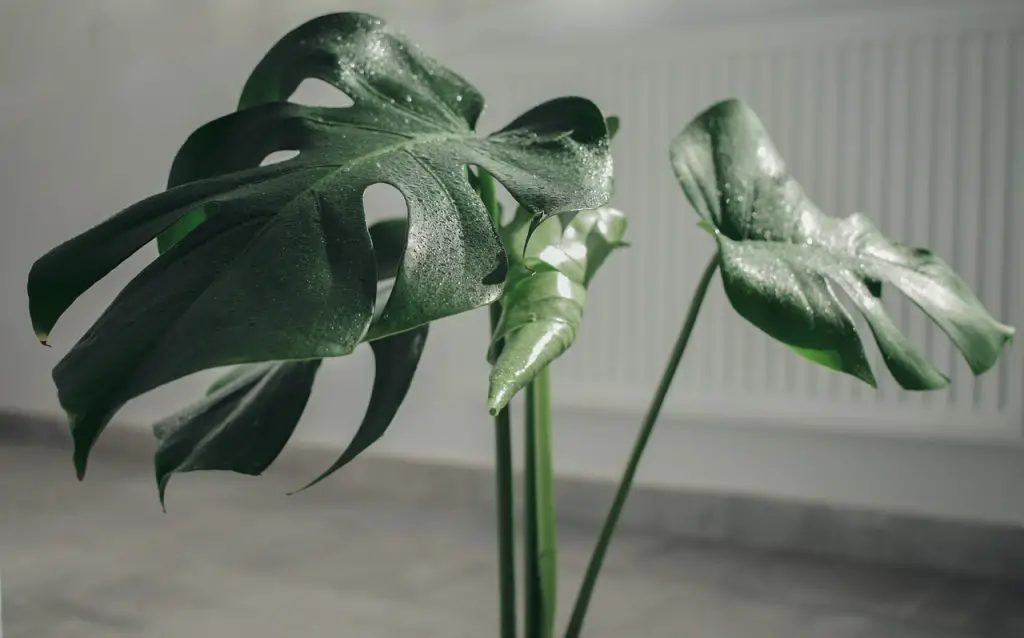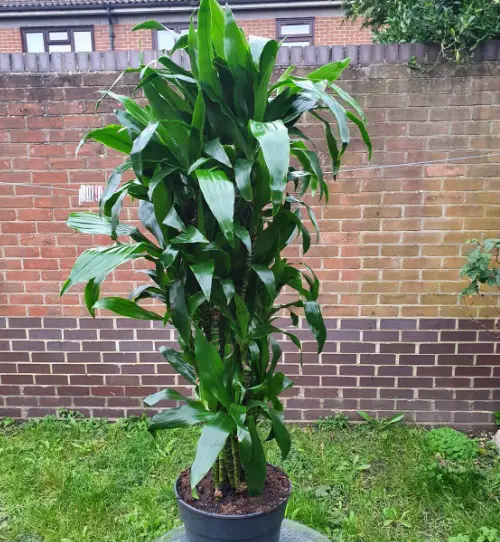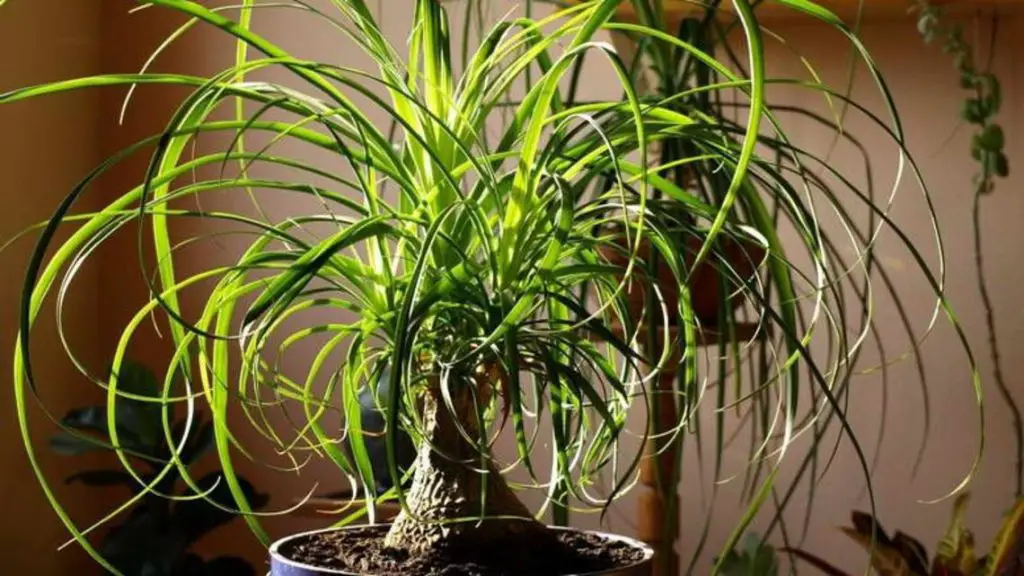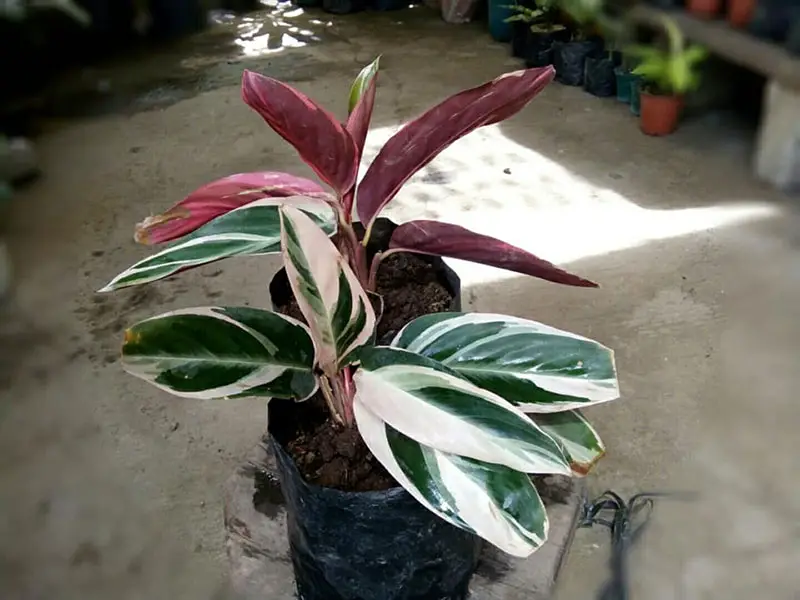Welcome to the world of houseplants! I’m passionate about helping plant lovers find the perfect indoor greenery suited for their lifestyles. When it comes to large plants that thrive in low light conditions, there are some amazing species out there – and I’m here to help you discover them.
From lush foliage to striking blooms, these larger-than-life specimens can bring so much life into your home without needing constant sunshine or maintenance. Whether you’re wanting something with plenty of texture or an eye-catching shape, there’s a low light houseplant just waiting for its chance to shine in your space.
1. Boston Fern(Nephrolepis Exaltata)
Boston ferns are an incredibly popular choice for indoor low light plants and can thrive in a wide variety of conditions. In fact, they have been the most common houseplant since Victorian times. The long-lasting foliage can reach up to two feet in length, while its beautiful arching fronds cascade gracefully from baskets or pots.
Growing Boston ferns indoors are easy to do if you provide them with indirect bright light, such as near east or north-facing windowsills. They prefer moist soil and need frequent misting to stay healthy, so it’s important to water them regularly throughout their growth period.
A great way to ensure optimal humidity levels is by setting up a humidifier nearby or placing the pot on a tray filled with pebbles and water. With proper care and attention, your Boston fern will reward you with lush greenery sure to add a touch of beauty and life to any room.
2. ZZ Plant (Zamioculcas Zamiifolia)
ZZ Plants are a great choice for indoor low light settings. This hardy plant is native to East Africa and is known for its love of indirect sunlight or shade. It has glossy green leaves that can grow up to two feet long, making it an attractive addition to any room in the home. It’s also very easy to care for – all you need is regular watering and occasional misting. Plus, with proper care, it will even produce small white flowers.
The ZZ Plant is incredibly tolerant of neglect and can survive in harsh conditions such as dim lighting and infrequent watering. That said, too much direct sun exposure may cause yellowing of the leaves, so keep this beauty away from sunny windowsills if possible. As far as pests go, spider mites are known to be attracted by the warm temperatures usually found indoors during summer months; however, they can simply be wiped off with a damp cloth or sprayed with insecticidal soap when spotted early on.
This plant makes a great option for those looking for an undemanding houseplant that adds a bit of greenery without requiring too much maintenance. Its attractive foliage and ability to endure less-than-ideal environments make it perfect for nearly any living space – no matter how dark or busy your lifestyle might be.
3. Snake Plant (Sansevieria Trifasciata)
Calling all plant lovers. If you’re looking for a large indoor low light plant, then look no further than the Snake Plant. This timeless classic has been around since antiquity and is still sought after today by those who appreciate its unique beauty. Also known as ‘Mother-in-Law’s Tongue’ due to its sharp pointy leaves, this ageless perennial will bring your home to life with its striking color and texture.
Snake Plants are hardy plants that can tolerate long periods of low light, making them ideal for any dark corner in your house or office. They also require very little water – about once every other week – so if you’re short on time or forgetful when it comes to watering, these are great picks for you. Despite their tough exterior, they do need some love from time to time; make sure to give them a good dusting off every now and then to keep their leaves shining bright.
The best part about Snake Plants? They come in an array of sizes, shapes, and colors – from slim upright ones perfect for small spaces to vibrant green varieties perfect for adding a pop of color into dull corners. With proper care and attention, your Snake Plant can last years without needing much maintenance at all. So don’t wait another minute – add one (or two.) of these stunning beauties into your home today.
4. Chinese Evergreen (Aglaonema Sp.)
Chinese Evergreen is a fantastic option for indoor gardens in low light environments. It’s an incredibly durable and easy-care plant, making it ideal for even the most novice of gardeners. The leaves are typically deep green with white streaks and they can grow up to two feet tall in optimal conditions.
In addition to being beautiful, Chinese Evergreens are also air-purifying plants that help to reduce toxins from the air. They require minimal watering and will thrive indoors year-round if given adequate indirect sunlight or fluorescent lighting. With their vibrant foliage and hardiness, these plants make great additions to any home or office space.
Chinese Evergreen is a wonderful choice for those looking for an attractive, low maintenance houseplant that can tolerate lower light levels. These plants provide beauty and add life to any room while cleaning the air of toxins at the same time. With its ease of care and striking coloration, what more could you ask for?
5. Gloxinia(Sinningia Speciosa)
If you’re looking for an eye-catching, low light plant with beautiful blooms, then the gloxinia is a great choice. This stunning member of the Gesneriaceae family has been cultivated since 1847. It’s easy to care for and adds a bit of drama to any room it inhabits. Here are some tips on how to keep your gloxinia healthy:
- Place in indirect sunlight – Gloxinias need bright but indirect light, so place them near windows that receive filtered sun or put them under artificial lights such as fluorescent lamps.
- Water regularly – Keep the soil consistently moist without over-watering, which can lead to root rot. Try misting the leaves every other day if possible.
- Feed once per month – Fertilize monthly during its growing season (spring through fall) using a balanced fertilizer formulated specifically for houseplants.
Gloxina plants don’t require much maintenance and thrive when given proper attention and love. They grow up to 15 inches high and will bloom year-round with vibrant flowers ranging from pink to purple depending on the variety chosen. With their striking foliage, long-lasting blooms, and low-light tolerance, these plants make wonderful additions to any home décor setting.
6. Corn Plant (Dracaena Fragrans)
Touted as one of the most ancient plants known to mankind, the corn plant is an ideal choice for large indoor low light settings. This majestic foliage can easily be identified by its long sword-like leaves that are variegated with shades of green and white stripes. Its versatile nature makes it a great addition to any room’s decor, adding both texture and color.
In terms of care, this type of corn plant does not require much attention from you. It prefers indirect sunlight but will also thrive in areas with ample natural light – no direct sun though. Watering should only be done when the soil has dried out completely between each watering session; overwatering can lead to root rot. Also, make sure to use lukewarm water since cold water may shock the roots. Fertilizing every two weeks during the spring and summer months will help ensure healthy growth and promote lush foliage.
You need to watch out for pests such as mealybugs which feed on sap from new stems and leaves. If these bugs appear on your corn plant treat them right away using insecticidal soap or neem oil – make sure to spray underneath the leaves too so they don’t hide there. With proper care, these grandiose houseplants can last up many years in your home bringing warmth and life into even the darkest corners.
7. Weeping Fig (Ficus Benjamina)
Weeping Fig is an incredibly popular indoor plant due to its unique shape and impressive foliage. This evergreen tree has drooping branches that can reach up to 8 feet in length, making it perfect for creating a natural canopy indoors. It’s also great as a privacy screen or as a decorative piece, either way, this low light-loving plant will thrive.
The Weeping Fig does best when kept in moderate temperatures between 55°F-85°F, with humidity levels of 40%-60%. In terms of lighting, this plant loves indirect sunlight but doesn’t require direct sun exposure. If you’re looking for a low-maintenance houseplant that offers plenty of visual appeal, the Weeping Fig is definitely worth considering.
Whether you place your Weeping Fig by the window or tucked away in a corner of the room, make sure it receives enough moisture from misting or watering two times per week. With proper care and attention, this beautiful tree will be sure to bring life into any space.
8. Golden Pothos (Epipremnum Aureum)
Next up is the Golden Pothos. This lush, trailing plant is one of the most popular houseplants for low-light environments. Its heart-shaped leaves are variegated in shades of yellow and green, making it quite a showstopper. It’s also easy to care for: just remember that this plant loves humidity and doesn’t need much direct sunlight.
When watering your pothos, let the top inch or two of the soil dry out before adding more water – too much moisture can cause root rot. Finally, you can prune back its stems if they become overgrown or leggy. With regular maintenance, your Golden Pothos will reward you with lovely foliage for years to come.
9. Swiss Cheese Plant (Monstera Deliciosa)
The Swiss cheese plant is a tropical evergreen with striking deep green leaves. It can be grown both indoors and outdoors, making it an excellent choice for low light living rooms or offices. The large perforations in the foliage are what give this species its unique name.
If you are looking for indirect sunlight and don’t want to worry about your plants getting too much sun exposure, then the Swiss cheese plant is ideal for you. With proper care, it can reach up to five feet tall; however, pruning regularly will help keep the size manageable. To promote healthy growth, water when the soil feels dry to the touch but avoid overwatering as this could lead to root rot. You may also need to provide humidity if air circulation is poor since this plant craves moisture-rich environments.
Overall, the Swiss cheese plant offers attractive visuals along with ease of maintenance requirements that make it perfect for those who have limited time on their hands yet still desire a lush indoor garden scene all year round. Its impressive size and shape lend itself well to being a statement piece in any room—all while bringing life into even darker areas of your home or office space.
10. Cast Iron Plant (Aspidistra Elatior)
Ah, the Cast Iron Plant – a plant that is so tough it could survive even in a nuclear winter. It’s no surprise then why this low-light-loving gem has been gracing homes with its presence for centuries. With just minimal care, you can enjoy these hardy plants for years to come.
This evergreen perennial is native to parts of Japan and Taiwan but will thrive in any climate or environment as long as it receives enough indirect sunlight. Despite its name, don’t be fooled into thinking your new houseplant needs iron supplements; what makes the Cast Iron Plant unique is its ability to “weather” anything life throws at it. From drafts and temperature fluctuations to dry air and neglectful owners, this hearty little guy won’t miss a beat.
In addition to making an ideal indoor companion due to its low maintenance requirements, Cast Iron Plants also make great additions to outdoor gardens since they are resistant to pests and disease. Plus, thanks to their slow growth rate and compact size (upwards of three feet tall), you won’t have too much pruning or trimming on your plate either. All in all, if you’re looking for an easygoing yet reliable partner in crime when it comes to caring for greenery indoors or out – look no further than our beloved Cast Iron Plant.
11. Philodendron (Philodendron Hederaceum Var. Hederaceum)
Philodendron is like a beacon of light in the darkness for low light indoor conditions. Its lush, heart-shaped leaves add life and energy to any room they inhabit. As a hardy houseplant, it requires very little maintenance and can survive with minimal sunlight or artificial lighting. The Philodendron thrives best when placed near an indirect source of natural light, such as a window that gets some morning sun but not too much direct afternoon sun.
One should water their Philodendron at least once every 7 days with lukewarm water – if you overwater your philodendron, its leaves will start to yellow. With proper care, this plant will grow vigorously into large plants that fill up any space indoors.
This majestic beauty will instantly transform a dull atmosphere into one filled with color and vibrance–the perfect addition to any home or office interior.
12. Parlor Palm (Chamaedorea Elegans)
Parlor Palm is an ideal choice for large indoor low light plants. I’m a big fan of this species because it’s easy to care for and looks great in any setting. It can tolerate lower lighting conditions than most other plants, making it perfect for those areas that don’t get much sunlight throughout the day but still require some natural greenery.
Plus, its slow growth rate means you won’t have to fuss with regular pruning or maintenance. This evergreen can reach heights of up to 8 feet, and its broad leaves create a lush look that adds life to any room. Its tolerance of dry soil also makes it a great option if you’re looking for something that doesn’t need a lot of water.
Overall, Parlor Palms are an attractive addition to your home that will bring years of beauty and joy. Now onto the next plant on our list: Umbrella Tree (Schefflera spp.).
13. Umbrella Tree (Schefflera Spp.)
The Umbrella Tree (Schefflera spp.) is an ideal choice for those looking to add a touch of tropical vibes to their home. This eye-catching, low maintenance plant can be used to bring some life and color into any room. Its lush foliage will create an atmosphere of warmth and coziness that your family or guests are sure to appreciate.
This hardy houseplant may require occasional pruning but it’s worth the effort when you see the results. Here are some tips on how to care for this beautiful indoor plant:
- Water every two weeks – just enough so the soil is moist without being overly wet.
- Place in bright indirect light but avoid direct sunlight as this could burn its leaves.
- Feed monthly with a balanced fertilizer during spring and summer months only.
These simple steps will ensure your Umbrella Tree stays healthy for years to come. With its vibrant green leaves, elegant stalks, and an overall air of sophistication, this tropical beauty is sure to become a beloved addition to your home. Its unique form creates visual interest which adds character and depth wherever it’s placed – making it perfect for filling empty corners or adding texture to large rooms.
14. English Ivy (Hedera Helix)
Next up, we have the English Ivy. A classic choice for indoor plants with its elegant trailing foliage. The best way to add a touch of sophistication and charm to any room in your home. This hardy houseplant adapts well to low light conditions but prefers more indirect sunlight. It will tolerate temperatures from 60°F (15°C) and higher, making it an ideal plant for cold winters or air-conditioned rooms.
English ivy is also known as Hedera helix and comes in many varieties ranging from deep green leaves with cream variegation to solid dark green or white options. Its versatility makes it a great option if you want something that can change up the look of your space without having to buy multiple different plants.
For care, water when the top inch of soil is dry – this usually means every week or two during the growing season and less often during winter months. Prune regularly to maintain shape and remove yellowing leaves as needed. With proper care, this plant can last years so why not bring some elegance into your home?
15. Money Tree (Pachira Aquatica)
The Money Tree is like a miracle in a pot. This amazing and unique plant is an absolute must-have for any indoor space. With its lush, green leaves and braided trunk, it provides not just beauty but also good luck – perfect for anyone looking to bring both energy and style into their home or office. Here are five reasons why the Money Tree should be at the top of your list when considering large indoor low light plants:
- It’s easy to care for – no need for complex watering schedules or special fertilizers.
- Its glossy foliage helps brighten up any room.
- Can tolerate low light conditions.
- Low maintenance with minimal pruning requirements.
- The braid pattern on its stem makes it a visually stunning addition to any interior design.
From its beautiful aesthetic charm to its ease of maintenance, it’s clear that the Money Tree has everything you could want from a large indoor low light plant. Not only does this eye-catching specimen add drama and texture to dull corners, but it can provide much-needed oxygen while filtering harmful toxins from the air around us.
16. Peperomia(P. Caperata)
Peperomia is an excellent choice for those looking to bring a low light indoor plant into their home. Its lush and vibrant foliage makes it a great addition to any room, no matter how dimly lit it may be. Its leaves are often dark green with red veins running through them in various directions. The size of the Peperomia can vary quite drastically depending on the variety that you choose – some reaching up to twelve inches tall. They are also known for being incredibly easy to care for, so even if you don’t have much experience with plants this could be a great option for you.
It prefers moist soil but does not like its roots sitting in water, so be sure to properly drain your potting mix for best results. Fertilizing once every two months will ensure healthy growth and keep its colors vivid. With regular pruning, it can easily become bushy over time as well. As long as you provide adequate moisture and bright indirect sunlight, this hardy little houseplant will thrive indoors all year round.
The best part about having a Peperomia is that they’re very forgiving when neglected; just give them some TLC when needed and they’ll bounce right back. So if you’re looking for an eye-catching yet low maintenance plant then look no further than the Peperomia.
17. Monstera (Monstera Deliciosa)
Monstera deliciosa is a beautiful, easy-care plant that’s perfect for low light settings. It has large, glossy leaves with attractive cutouts and an eye-catching silhouette. The foliage stands out against walls or in corners of living rooms, bedrooms or offices.
I like to refer to it as the “Swiss cheese plant” because its distinctive pattern looks like slices of Swiss cheese. Monstera can tolerate lower humidity but they do best when you mist them regularly. Make sure not to overwater your monstera – too much water will lead to root rot. Provide indirect sunlight and keep your monstera away from the direct sun which may cause leaf burn.
In addition to being aesthetically pleasing, Monstera also purifies the air naturally by absorbing toxins like formaldehyde and xylene.
18. Lucky Bamboo (Dracaena Sanderiana)
Few plants can compare to the captivating appeal of Lucky Bamboo. This unique species is almost as magical as it looks – a splash of Asian flair that adds instant beauty to any room. With its tall, thin stalks and curvaceous green leaves, this plant has an exotic allure like no other.
What’s more, it requires practically no maintenance. Just keep it in indirect light and occasionally mist the leaves with water. It doesn’t need fertilizer or fancy potting soil either; just some rocks at the bottom so its roots don’t sit in standing water.
Truly, if you’re looking for a low-light houseplant that gives your home a touch of elegance, the Lucky Bamboo is hard to beat.
19. Ponytail Palm (Beaucarnea Recurvata)
The Ponytail Palm is a unique and beautiful addition to any home. I’m sure you’ll be pleased with the way it looks in your home, as well as its ability to thrive even in low light conditions. It’s an easy-care houseplant that requires minimal maintenance and offers a lot of charm.
This palm tree has long leaves radiating outward from its trunk like a ponytail, hence the name. The trunk can reach up to 1ft tall when mature and have multiple “ponytails” of different sizes cascading down gracefully. Its leaves are wide and thick – they look almost leathery. They also come in shades of green ranging from dark green to bright yellowish-green or blue-green depending on how much sun exposure it gets indoors.
It doesn’t require frequent watering but make sure not to let the soil become too dry, either. A good rule of thumb is to water every two weeks during spring & summer months and about once per month for fall & winter months –but adjust according to your environment’s humidity level.
20. Triostar (Stromanthe Sanguinea)
The Triostar is truly something incredible. Its sheer beauty and boldness leap out at you, capturing your attention and transporting you to another realm of the plant world. It’s a large indoor low light plant that will bring life into any space it inhabits; its colorful foliage can range from deep greens, and pinks to whites and purples depending on how much sun exposure it receives. The leaves are glossy with pointed tips and have an almost iridescent look about them which makes for a stunning visual display in any room or even office setting.
This plant is relatively easy to care for as long as you provide adequate water and humidity levels. Soil should be well-draining but slightly damp so make sure you’re checking it regularly. Make sure not to overwater this one because too much moisture can lead to root rot.
If kept indoors, place it near a bright window if possible but don’t subject it to direct sunlight otherwise its leaves may scorch easily. Fertilize monthly during spring through summer when the growth rate picks up again after winter dormancy – just use liquid fertilizer diluted by half the recommended strength twice per month instead.
The Triostar is a beautiful addition to any home or business environment due to its unique coloring and vibrant appearance. This versatile plant looks great in many different types of containers ranging from modern planters all the way down to rustic wicker baskets – whatever suits your style best.
Final Thought
The large indoor low light plants we discussed are all beautiful additions to any home. It’s ironic that they require so little care and yet give so much back in terms of beauty, air purification, and even emotional well-being. These indoor plants are reliable choices for adding a touch of nature to your living space without the hassle of extra maintenance required by other types of houseplants.
I encourage everyone interested in getting these stunning low light plants into their home to do some research on how best to take care of them – each one has its own needs when it comes to temperature, soil composition, and water requirements. With just a bit of knowledge about what works best for each plant, you can enjoy years (or maybe even decades.) of lush foliage.
When considering which type or combination of large indoor low light plants is right for you keep in mind that there really isn’t a wrong answer – if this is something you truly love then go ahead and make it happen. Each choice offers unique benefits that will bring life into your home while also providing countless hours of enjoyment as you watch them grow over time. Enjoy.

